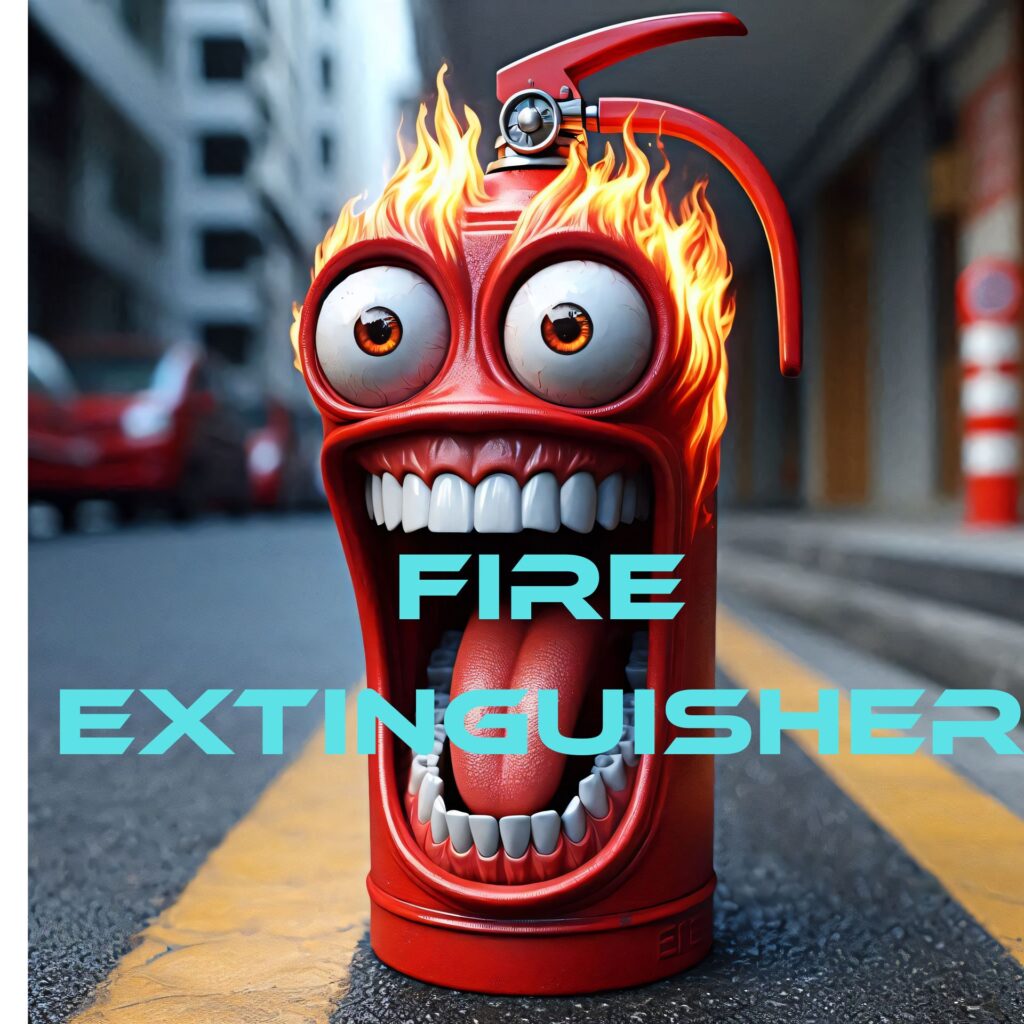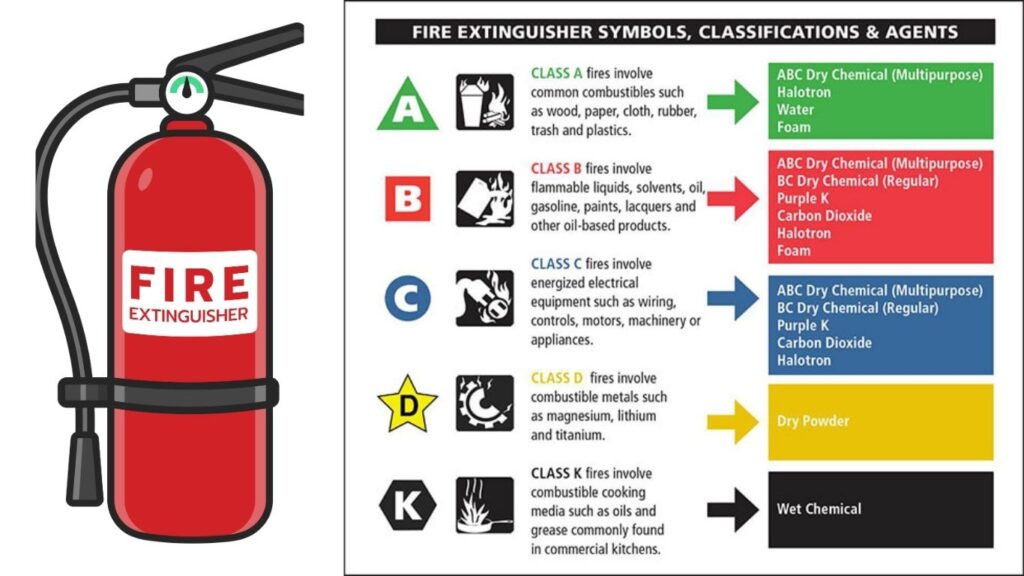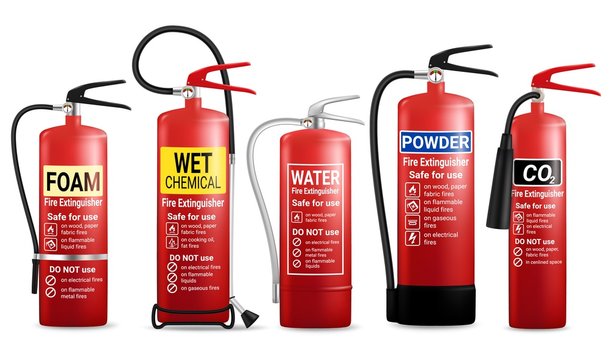
As we all know, quite a number of fire incidents have occurred all over, and due to carelessness, the fire was not contained or put off quickly. There are some fire types which are not appropriate for some fire extinguishers and this one applies to electrical flames more. Electrical fires are very hazardous as some risk lies in the very attempts to put them out, the chances that a wrong extinguisher will be used are high. In the current blog post, we are going to consider what type of fire extinguisher is used for fire caused by electricity, and what makes it the most efficient tool along with how to manage and guard against such fires safely. Let us begin!
What Are Electrical Fires?

An electrical fire occurs when the electric systems and appliances spark due to some malfunction or excessive working overload. Elsewhere these fires are referred to as class C fires. So, the problems targeted in respect of this fire type should include malfunctions in the electric circuits. These problems could also include circuit overload, equipment failure, and incorrect use of electronics. Although electrical apparatus has potential electrical hazards causing fires, it cannot burn itself. It is indeed the hot surface that has caused the fires of the electric equipment’s overheat.
Aside from the fire, the risk of electrocution is the reason that makes electrical fires distinct from other types of fires. The risk of electrocution arises from the use of water, a common fire extinguisher. That’s why it is important to use the right fire extinguisher for electrical fires.
Types of Fire Extinguishers

When it comes to the best fire extinguisher for electrical fire, we need to first look and comprehend the classifications of fires and fire extinguishers. Fire extinguishers are further classified into classes according to the class of fires they put out:
- Class A: These are fires of ordinary combustibles, paper, wood, and cloth
- Class B: This involves fires from flammable liquids such as gasoline, oil and solvents.
- Class C: Electrical fires for example those involving computers circuit breakers and wires.
- Class D: Combustible metals fires like sodium and potassium.
- Class K: Cooking oil and grease fires mostly found in commercial kitchens.
For electrical fires, the key category is Class C, and we’ll focus on which fire extinguishers are suitable for this class.
What Fire Extinguisher Can Be Used for Electrical Fires and Why?

Class C fire extinguishers are specifically designed for the purpose of preventing electrical fires. Fire extinguishers meant for this category of fire contain agents, which are non-conductive, so there are no chances of electrocution when bringing the whirl of the flame down.
Any type of fire which ranges from small electrical appliance fires to extensive structural fires is always met with the use of fire extinguishers of various varieties and different extiguishing agents are employed. The most relatively commonly utilized will be discussed more in details here below:
1. CO2 Fire Extinguishers
Fires from electrical appliances can be effectively suppressed using the CO2 fire extinguishers because they are the most advanced fire extinguishers for the CPU. This is made easier because most of them create a layer of carbon dioxide over the fire and effectively cooling the equipment and reducing the chances of the fire further spreading. It is also very ideal for lexicon transmission avert. FAILURES It is gassed and so no market to mop up the desk are all kinds of electrical devices.
Advantages of CO2 Extinguishers:
- Non electric hence can be used safely on electrical fire without the risk of electrical shock.
- Chemical residue is left behind since during the use of electrical component there will be no no dust cleaning.
- All fires usually require oxygen in order to burn and any form of gauze that prevents oxygen from reaching the fire will also be smothering the fire, putting out the flames.
Disadvantages of CO2 Extinguishers:
- Not suitable for fires involving class A combustibles.
- CO2 poses as an asphyxia hazard in places with limited airflow.
- Robust equipment may suffer damage in the event that CO2 is released quickly due to thermal shock.
2. Dry Chemical Fire Extinguishers
Further to CO2 fire extinguishers, another frequently used chemical agent for electrical fires is the class ABC dry Powder. These extinguishers are also multipurpose since they combine elements for fighting Class A fires, Class B and Class C fires. There is fine powder like monoammonium phosphate and sodium bicarbonate which is spread to cut the oxygen from reaching the fuels hence making the fire passive.
Advantages of Dry Powder Extinguishers:
- Multipurpose and can handle such fires as Electrical, Flammable liquids, and Normal combustibles.
- Easily obtainable and user friendly.
- Effective in containing the flames and preventing further67 burning of the material present at the flame site.
Disadvantages of Dry Powder Extinguishers:
- All these extinguishers contain or produce a powdery residue such as makeup, which is destructive to electrical appliances.
- Cleaning the application residue may also consume great time and paralyze the working ability of electronically operated equipment.
3. Clean Agent Fire Extinguishers (Halon and Halotron)
In clean agent fire extinguishers, all fires involving electrical units can be smothered without concern about harmful materials being left behind to protect costly electronic environments. Clean agent herein pertains to gaseous agents such as halon, halotron, or halon substitutes such as fm 200 or Novec 1230. It’s non-conductive and safe to fight against electrical fires so these agents work by disrupting the chemical processes involved in a fire.
Advantages of Clean Agent Extinguishers:
- Can be used safely on electrical equipment.
- No residues remain, thus saving cleaning and costs related to equipment failure.
- There are more environmentally friendly choices.
Disadvantages of Clean Agent Extinguishers:
- Though expensive, such agents cannot be compared to the usage of CO2 or dry chemical fire extinguishers.
- For environmental reasons, halon the older replacement is not mostly in use any longer.
4. Water Mist Fire Extinguishers
Most unscrupulous individuals understand that water and electricity don’t go together at all when it comes to using any kind of wit, restraint or caution. But the situation is different when talking about water mist fire extinguishers. Water mist extinguishers use deionized water by releasing it as a fine mist rather than in natural liquid form. Hence, the ability to conduct electricity using water is decreased. And that mist of cooling water can be used to kill fire in every sense and in every angle, therefore slain without the danger of electric shock. Water mist type of extinguishers is comparatively new design extinguishers and supports fire Class A B and C hazards so they are useful.
Advantages of Water Mist Extinguishers:
- Great when fighting electrical fires because they utilize deionized water.
- Designed for multipurpose use and can also work well when there are Class A fires.
- Safe for the atmosphere as there are no chemical agents, water is used instead.
Disadvantages of Water Mist Extinguishers:
- Supply is limited in relation to the other types.
- Not suitable for Class B fires of flammable liquids only.
How to Safely Use a Fire Extinguisher for Electrical Fires
Identifying which fire extinguisher to use is only part of the equation. Knowing how to use it correctly is equally as important if there is a fire. Below is a step guide when it comes to extinguishing an electrical fire.
1. Turn off the Power: If it is reasonably possible to switch off or turn off the source of the fire, then the fire which is in the fire area is limited since there won’t be any danger of electrocution and it also helps contain the fire from getting out of hand.
2. Assess the Situation: It is always necessary to assess whether the fire is too large before vectoring any extinguisher at it. If it appears that the fire is beyond control or is spreading fast, it is always good to leave the area/call emergency services.
3. Use the PASS Method:
- Pull out the pin which is used to lock the extinguisher.
- Appropriate the NOZZLE at the base of the fire.
- Squeeze the handle in order to operate the dispending mechanism.
- Sweep the firearm’s nozzle sideways until no flame or fire is visible.
4. Monitor the Fire: Upon apparent collapse of the fire, there is need to survey the section of the blaze for re-action again.
5. Call the Professionals: Once you have put off the fires and the equipment is still functioning, do not switch on the power back again until an electrician has checked the affected electric appliances.
Preventing Electrical Fires
Prevention of electrical fires is better than going out and trying to put them off. It is possible to reduce the risks of starting an electrical fire in your home or any other premises by observing some basic rules of safety:
- Regular Inspection of Electrical Equipment: Carry out routine checks to ensure that electrical gadgets, wires and even electrical circuits are covered and working properly. Replace worn out wires and busted gadgets instantly.
- Avoid Overloading Circuits: Do not stress a whole lot of energy output on only one or two switches by utilizing several electrical gadgets/equipment on them.
- To avert damage: The use of surge protectors for computers and all common appliances at homes, for instance, the home theater systems, ought to be used.
- Use of Smoke Alarms: Metal casing, wires and other electrical or non-combustible materials, which lead to high electrical resistances and cannot catch fire give early detection of fires through the use of smoke detectors.
- The Use of Extension Cords Is Limited, No Damage: Do not use any extension cords which have visible damage or with exposed wirings, do not run cords underneath carpets or other places where it could be crushed.
Conclusion
Using the correct fire extinguisher type for electric fires is important not only in preserving life but for the property too. Most common types of fire extinguishers include, but may not be limited to CO2, dry chemicals, clean agents and water mist. However, CO2 and clean agents are mostly used in places where electronics are present or other sensitive materials.
But by learning about the types of extinguishers that are in the house in different locations and using them properly one can avoid an electrical fire disaster. Moreover, employing appropriate electrical safety precaution standards and measures will drastically reduce the risk of the occurrence of such electrical fire situations. Knowledge is power and when safety comes first in every setting, be ready for any emergency situation.
Read our latest article about Directional Relay: How to Better Understand . Any question regarding to this article please contact us.
Frequently Asked Questions (FAQs) on Fire Extinguisher:
Q1.Can I use a multi-purpose (ABC) extinguisher on electrical fires?
Indeed, multi-purpose ABC fire extinguishers are appropriate for electrical fires as they encompass Class A (ordinary combustibles), Class B (flammable liquids), and Class C (electrical fires). These types of extinguishers utilize dry chemical agents such as monoammonium phosphate that disrupt the chemical processes of combustion. The benefit of having ABC extinguishers is their adaptability for home, office, and industrial settings, as different types of fires may arise. One disadvantage, however, is the loose powder residue caused by the extinguisher’s use, which poses significant challenges when cleaning sensitive electronic devices. In environments with delicate apparatus, CO2 extinguishers are more appropriate.
Q2.What should I consider before buying a fire extinguisher for electrical safety at home?
Pay attention to the weight, the extinguisher’s labeling, where it is situated in the home, ease of use, type of extinguishing agent, and certification. Buy an extinguisher labeled for Class C fires. This can be in the form of CO2 or dry chemical. For home use, 5-pound extinguishers are reasonably sized. Consider CO2 models as they are not flammable. Check that the extinguisher is also UL certified. This will mean it is considered safe under industry standards. Think about the placement; put the kitchen, garage, and home office as priorities. Everyone in the home must be shown the appropriate steps for usage of the extinguisher.
Q3.Are there portable fire extinguishers designed specifically for electronics?
Indeed, portable fire extinguishers designed for very delicate and electronic devices do exist. For this purpose, CO2 extinguishers are most often recommended since they do not leave any residue that could damage sensitive parts. Furthermore, some modern variants employ clean agents like FE-36 or Halotron. Unlike older models, these are safe for the environment and electronic devices, which makes them ideal for use in server rooms, computer laboratories, and other advanced areas. Although these types of extinguishers are more expensive, they are a worthwhile investment when preserving valuable or irreplaceable electronics.
Q4.What happens if I use the wrong fire extinguisher on an electrical fire?
If the type of extinguisher used is inappropriate, such as one that is water based, the consequences can be life-threatening. Water can serve as a source of electricity, therefore if the equipment is still turned on, there is a high chance of electrocution. Also, there is a likelihood that the flame will get worse or it will spread if the extinguisher used is not appropriate for all types of fuels including class B and C fires. For instance, electric fires cannot be extinguished by means of foam or water supply, for they will ruin the equipment and the building. It is always best to check if the extinguisher is labeled for use on Class C fires. If there is any uncertainty, call the fire department and evacuate the area.
Q5.How often should I replace or recharge an electrical fire extinguisher?
As with any other apparatus, fire extinguishers require a certain level of attention and servicing to ensure efficiency. An inspection is conducted for most types of extinguishers within 1 year and may require professional servicing (refilling) every 6 years and hydrostatic testing every 12 years. It is crucial that any fire extinguishers which have been partially used are recharged immediately. Certain models have time stamps while others use gauges to measure the pressure of the contents. If the pointer isn’t positioned within the optimal range, action should be taken promptly. CO2 extinguishers should be checked and weighed periodically to test the internal pressure. Maintaining your extinguisher meticulously is vital so that it works flawlessly during emergencies.
Q6.What are the advantages of using a CO2 fire extinguisher for electrical fires?
One of the greatest advantages of CO2 fire extinguishers is the absence of residue left behind in the aftermath. In the case of electrical fires where computers and sensitive electronic devices such as electric panels are prevalent, the residue from dry chemical extinguishers can be devastating. The non-corrosive nature of carbon dioxide reinforces its effectiveness, because once the fire is extinguished, no additional risks are introduced to the equipment. CO2 extinguishers also work by displacing oxygen around the fire and ,in turn, suffocating it. The greatest shortcomings are the restrictions on range, as well as the rapid dissipation of CO2 in drafty areas. For best results, prompt and precise use is a must.
Q7.Are there any maintenance or inspection tips for electrical fire extinguishers?
Yes, maintenance safeguards the functionality of your fire extinguisher during an emergency situation. Monthly inspections must verify clear labeling, unbroken safety pin, proper screws, and other appropriate marking. The fire extinguisher should be located where it is accessible and easily reachable. Each year, a licensed examiner must carry out a detailed examination which includes a general physical check of the extinguisher, weighing it, checking for rust or scratches, and also for cuts. Special attention should be made to CO2 cylinders, which have no pressure gauge, and therefore must be checked constantly to prevent leaking. CO2 fire extinguishers should be checked regularly because CO2 fire extinguishers have no pressure gauge leading to undetectable leaking. Further, extinguishers must be replaced and serviced immediately no matter the level of discharge.
